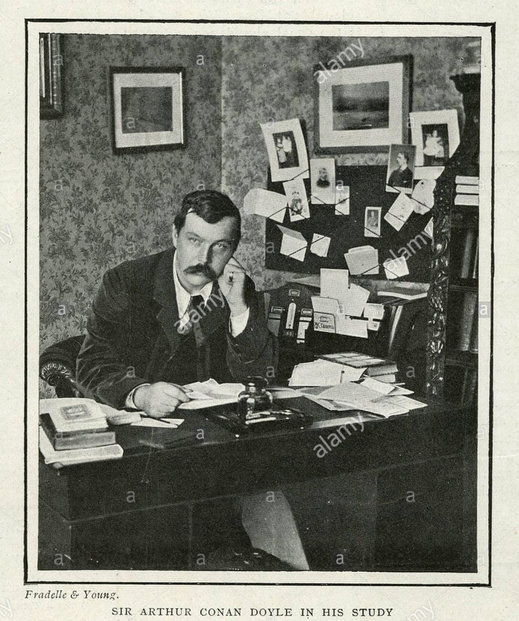This is a long-running (book #8 is in print; book #9 is currently being written) series about a multiverse in which its inhabitants travel from one world to another according to their own capabilities. The multiverse is inhabited by the fae, who embody and use the forces of chaos; dragons, who are their polar opposites in embracing order; and The Library, staffed by human Librarians who speak a Language that allows them to manipulate objects in their work of keeping humans safe from the two other races. So lots of adventure and politics.
But the Librarian who is the series protagonist is based in a quasi-Victorian world, where she is friends and allies with, amongst others, the part-fae Peregrine Vale. Each fae embraces a particular archetype and their lives enact that archetype's story. Vale's is the Great Detective, the story of which sometimes leads him overenthusiastically into tracking down mysteries. He even has a police contact, the useful Inspector Singh. The writer is sparing but reliable in seeding his portions of the action with both ACD and Sherlock BBC breadcrumbs, as well as giving the protagonist many worries that Vale's chosen archetype endangers him more than he deserves as a person. In other words, Holmes' compulsion to occupy his brain with cases is cast here as a different mechanism, but still one of intellectual seduction. And thus the series protagonist, Irene Winters, can be seen as a casual sort of functional Watson although without the intensity of relationship that typically characterises most Holmes/Watson pairings. In fact, she inhabits a role that might be considered a Watsonified version of The Woman, although there is no sexual tension between the two.
I'll admit to a fist-pump in reading The Dark Archive, book #8, when the antagonist (specifically Vale's antagonist) for the episode is introduced as The Professor. Ooooooh! May we anticipate a waterfall in their future? I haven't finished it yet but I'll be surprised if the writer can resist, even if it's just a slip and fall in the shower.
There's a lot of other stuff going on in this series, but a little Sherlock Holmes fanfic never goes amiss.
Author website
Wikipedia entry
WorldCat
But the Librarian who is the series protagonist is based in a quasi-Victorian world, where she is friends and allies with, amongst others, the part-fae Peregrine Vale. Each fae embraces a particular archetype and their lives enact that archetype's story. Vale's is the Great Detective, the story of which sometimes leads him overenthusiastically into tracking down mysteries. He even has a police contact, the useful Inspector Singh. The writer is sparing but reliable in seeding his portions of the action with both ACD and Sherlock BBC breadcrumbs, as well as giving the protagonist many worries that Vale's chosen archetype endangers him more than he deserves as a person. In other words, Holmes' compulsion to occupy his brain with cases is cast here as a different mechanism, but still one of intellectual seduction. And thus the series protagonist, Irene Winters, can be seen as a casual sort of functional Watson although without the intensity of relationship that typically characterises most Holmes/Watson pairings. In fact, she inhabits a role that might be considered a Watsonified version of The Woman, although there is no sexual tension between the two.
I'll admit to a fist-pump in reading The Dark Archive, book #8, when the antagonist (specifically Vale's antagonist) for the episode is introduced as The Professor. Ooooooh! May we anticipate a waterfall in their future? I haven't finished it yet but I'll be surprised if the writer can resist, even if it's just a slip and fall in the shower.
There's a lot of other stuff going on in this series, but a little Sherlock Holmes fanfic never goes amiss.
Author website
Wikipedia entry
WorldCat













